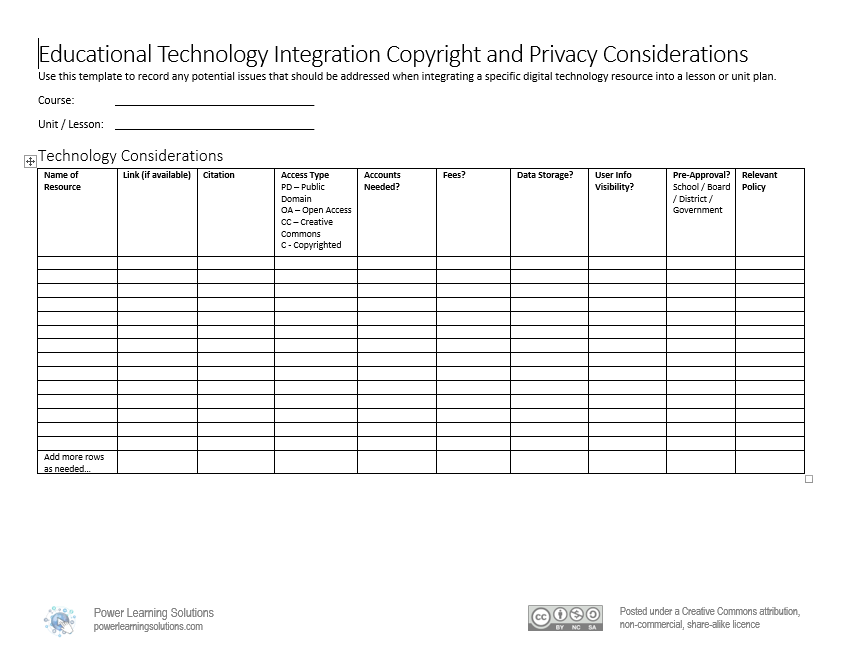Author
Rob Power, EdD
Affiliation
Assistant Professor of Education, Cape Breton University
Author’s Note
This chapter was originally published as a blog post on the Power Learning Solutions blog (23 February 2021).
Overview
In my instructional design and educational technology integration courses, my students frequently develop plans for the integration of digital resources to help resolve instructional design problems, or to better achieve learning goals and objectives. I often recommend the use of Bates’s SECTIONS tool (Bates, 2019; Underhill, 2010) for evaluating the suitability of a digital resource to meet learning needs, and the context in which the learning is taking place. But, finding the right tool is not enough!
I try to impress upon my students the importance of taking into account, in advance, potential copyright considerations and privacy and access to information issues. No teacher or student wants to get into trouble for violating copyright restrictions. And, many jurisdictions (schools, school boards or districts, local government departments) now have relevant privacy and access to information policies. By addressing these considerations up front — or at least identifying which ones need to be addressed — we can avoid getting into a situation where an otherwise well-designed lesson or unit plan ends up “dead in the water” because we simply are not allowed to proceed as planned.
In response to inquiries from some of my students, I have created this relatively basic template that you can use to keep track of the digital resources that you plan to use, how to give them proper credit, and what issues you, or a fellow educator, need to address before implementing your lesson or unit plan.

References
Bates, A. (2019). Choosing and using media in education: The SECTIONS model. In Teaching in a Digital Age – Second Edition. Tony Bates Associates Ltd. https://pressbooks.bccampus.ca/teachinginadigitalagev2/part/9-pedagogical-differences-between-media/
Underhill, C. (2010). Assessing Technology Using the SECTIONS Model. [PDF file]. University of British Columbia, Centre for Teaching, Learning and Technology. https://wiki.ubc.ca/images/1/19/SECTIONS_Framework.pdf
Power, R. (2021, February 26). Finding the Right Digital Tool is Not Enough: Addressing Copyright and Privacy Considerations. [Web log post]. Power Learning Solutions. https://www.powerlearningsolutions.com/blog/finding-the-right-digital-tool-is-not-enough-addressing-copyright-and-privacy-considerations

